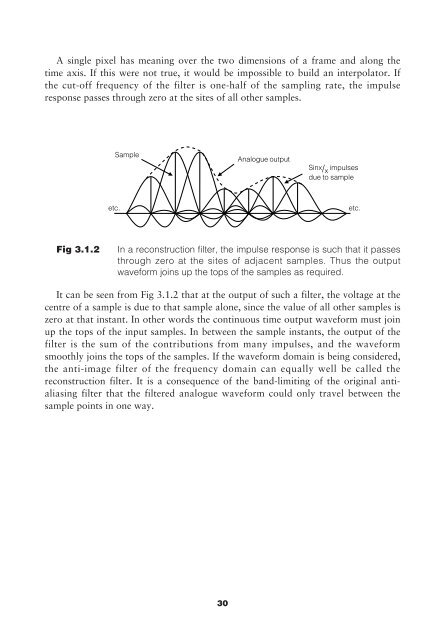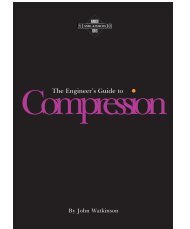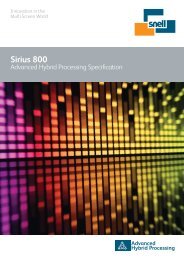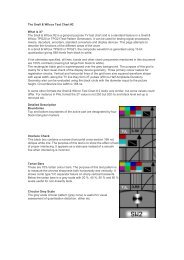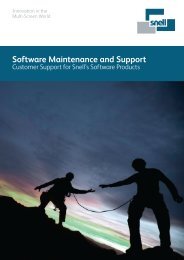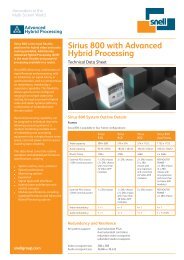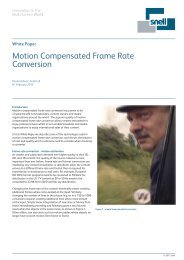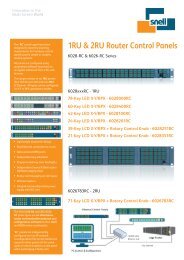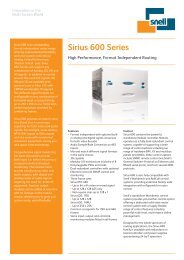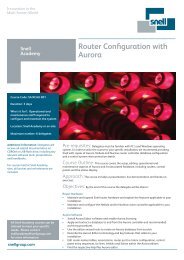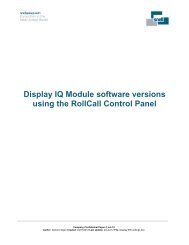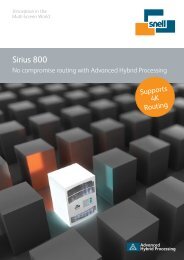The Engineer's Guide to Standards Conversion - Snell
The Engineer's Guide to Standards Conversion - Snell
The Engineer's Guide to Standards Conversion - Snell
You also want an ePaper? Increase the reach of your titles
YUMPU automatically turns print PDFs into web optimized ePapers that Google loves.
A single pixel has meaning over the two dimensions of a frame and along the<br />
time axis. If this were not true, it would be impossible <strong>to</strong> build an interpola<strong>to</strong>r. If<br />
the cut-off frequency of the filter is one-half of the sampling rate, the impulse<br />
response passes through zero at the sites of all other samples.<br />
Sample<br />
Analogue output<br />
Sinx/ x<br />
impulses<br />
due <strong>to</strong> sample<br />
etc.<br />
etc.<br />
Fig 3.1.2<br />
In a reconstruction filter, the impulse response is such that it passes<br />
through zero at the sites of adjacent samples. Thus the output<br />
waveform joins up the <strong>to</strong>ps of the samples as required.<br />
It can be seen from Fig 3.1.2 that at the output of such a filter, the voltage at the<br />
centre of a sample is due <strong>to</strong> that sample alone, since the value of all other samples is<br />
zero at that instant. In other words the continuous time output waveform must join<br />
up the <strong>to</strong>ps of the input samples. In between the sample instants, the output of the<br />
filter is the sum of the contributions from many impulses, and the waveform<br />
smoothly joins the <strong>to</strong>ps of the samples. If the waveform domain is being considered,<br />
the anti-image filter of the frequency domain can equally well be called the<br />
reconstruction filter. It is a consequence of the band-limiting of the original antialiasing<br />
filter that the filtered analogue waveform could only travel between the<br />
sample points in one way.<br />
30


